Can Cold Plunges Help Reduce Inflammatory Flares in MS?
Introduction
For people living with multiple sclerosis (MS), flare-ups—also called relapses or exacerbations—can be overwhelming. A flare might come on suddenly, with a wave of new or worsening symptoms like fatigue, muscle weakness, brain fog, or vision problems. These episodes are caused by bursts of inflammation that damage the myelin sheath—the protective coating around nerves in the central nervous system.
As more people turn to natural and complementary therapies for relief, cold plunges have captured attention as a promising tool for inflammation management. But can immersing yourself in cold water actually reduce inflammatory flares in MS? Let’s dive into the science, explore real-world applications, and look at how to use this therapy safely.
Want a cold plunge? Click here.
🧠 Understanding MS and Inflammation
Multiple sclerosis is an autoimmune disease where the immune system mistakenly attacks healthy tissue in the central nervous system (CNS), particularly the myelin sheath. This damage disrupts nerve communication and leads to a wide range of symptoms.
🔥 What Causes MS Flares?

MS flares or relapses occur when:
- The immune system becomes overactive
- New lesions form on the brain or spinal cord
- Environmental triggers (like stress, heat, illness) increase systemic inflammation
Cytokines—chemical messengers like IL-6, TNF-alpha, and IFN-gamma—play a major role in these inflammatory processes. When they’re elevated, so is the likelihood of a flare.
Reducing inflammation isn’t just about comfort—it’s a core part of MS management. This is where cold plunges may come in.
❄️ What Are Cold Plunges?
Cold plunges are a form of cold water immersion therapy where a person submerges part or all of their body in water typically between 10–15°C (50–59°F). Common methods include:
- Ice baths
- Cold plunge tubs
- Outdoor winter swimming
- Cryotherapy (less immersive but similar idea)
Cold plunging isn’t just for elite athletes anymore—people with chronic conditions are exploring its benefits for pain relief, inflammation control, immune modulation, and mood support.
🔬 The Science Behind Cold Plunges and Inflammation
1. Reduction in Pro-Inflammatory Cytokines
Research has shown that cold water immersion can significantly reduce levels of TNF-alpha and IL-6, two cytokines strongly linked to MS flares.
➡️ In one 2014 study, participants who practiced cold exposure alongside breathing exercises saw reduced inflammatory responses after being exposed to bacterial endotoxins (Wim Hof et al., PNAS, 2014).
2. Boost in Anti-Inflammatory Cytokines
Cold plunging doesn’t just suppress inflammation—it also increases anti-inflammatory cytokines like IL-10, which helps restore immune balance.
This balance is crucial for MS, where overactive immune responses can lead to neurological damage.
3. Vagus Nerve Stimulation
Cold exposure, especially to the face and neck, stimulates the vagus nerve—which controls the parasympathetic nervous system. Vagal activation is associated with:
- Lower inflammation
- Reduced stress hormone levels (like cortisol)
- Better autonomic regulation in MS
This effect is called the cholinergic anti-inflammatory pathway—a natural way your body dials down inflammatory activity.
4. Hormetic Stress Response
Cold plunging is a form of hormetic stress—a mild challenge that encourages your body to adapt and grow stronger. Like exercise or fasting, short cold exposures may help:
- Strengthen mitochondria
- Improve resilience to stress
- Enhance recovery after inflammation
📚 What Does Research Say About Cold Therapy and MS?
While research on cold plunges specifically for MS is still emerging, related studies offer encouraging signals:
A 2013 study in Frontiers in Bioscience noted that therapeutic hypothermia reduced CNS inflammation in neurodegenerative models.
A 2017 review of cold exposure and exercise recovery found consistent reductions in C-reactive protein (a key inflammation marker).
Anecdotally, MS communities report less fatigue, reduced swelling, and even fewer flares after consistent cold water use.
💡 Potential Benefits of Cold Plunges for MS Flares

Here’s how cold plunging may support MS management and potentially reduce flare frequency or severity:
| Benefit | How It Helps in MS |
|---|---|
| 🔥 Lowers inflammation | Reduces pro-inflammatory cytokines involved in flares |
| 🧘Activates vagus nerve | Promotes calm, immune balance, and autonomic regulation |
| 🌬️ Enhances stress resilience | Helps prevent stress-induced flares |
| 🛡️ May protect brain tissue | Cold has shown neuroprotective potential in animal studies |
| 🌡️ Cools the body | Counteracts heat-induced pseudo-flares |
🧊 How to Safely Try Cold Plunges with MS
Cold therapy isn’t one-size-fits-all, especially with a condition like MS. Some people with MS have cold intolerance or experience spasticity when chilled. That’s why it’s essential to approach this slowly and mindfully.
🧊 How to Safely Try Cold Plunges with MS
Cold therapy isn’t one-size-fits-all, especially with a condition like MS. Some people with MS have cold intolerance or experience spasticity when chilled. That’s why it’s essential to approach this slowly and mindfully.
🧊 How to Safely Get Started with Cold Plunges for MS
Cold therapy can offer powerful benefits—but with MS, it’s important to be cautious. Some people experience cold sensitivity, muscle stiffness, or spasticity in response to lower temperatures. That’s why it’s essential to start gently, listen to your body, and progress at your own pace.
✅ Safe-Start Tips for People with MS
🔹 Begin with Face or Hand Immersion
Start by dipping your face into a bowl of cold water or soaking your hands in ice water for 30 seconds. This mild method stimulates the vagus nerve and initiates calming effects without full-body stress.
🔹 Try a Cold Shower Finish
At the end of your warm shower, gradually turn the temperature down for 30 to 60 seconds. Over time, work your way up to 2–3 minutes if comfortable.
🔹 Ease Into Short Cold Plunge Sessions
If using a cold plunge tub or ice bath, begin with just 30–60 seconds in water around 12–15°C (53–59°F). Always exit promptly and warm up afterward.
🔹 Monitor How You Feel
Keep a journal or log to track your symptoms, energy, and mood after each session. Are you feeling calmer? Clearer? Or more fatigued? Let your body guide your pace.
🔹 Avoid During Flares
Cold plunges are best used during stable periods. If you’re experiencing a relapse or active symptoms, consult your healthcare provider before starting.
🔹 Warm Up Intentionally
Always rewarm gently after a session. Wrap yourself in blankets, sip a warm drink, do light movement, or enjoy a heated space to bring your core temperature back up.
🧬 How Cold Exposure May Help Prevent Flares
Flares can be unpredictable, but we know certain triggers—like heat, stress, infection, and poor sleep—raise the risk. Cold plunging may:
- Regulate autonomic function (balancing the sympathetic/parasympathetic nervous system)
- Lower cortisol levels after an initial spike
- Boost resilience to heat, which is known to worsen MS symptoms
- Reduce overall inflammation, decreasing the likelihood of flares
Think of cold plunges as a tool that helps your body stay in regulatory mode, instead of overreactive mode.
🧠 Real Stories from the MS Community
Many people with MS are experimenting with cold plunges, cold showers, or cryotherapy as part of their self-care routines.
“I started plunging for 2 minutes a day, and it’s helped me stay clear-headed and more emotionally stable. I used to flare after stress—now it feels like my body bounces back quicker.” —Kate, 34, RRMS
“Cold water calms my nerve pain and helps me sleep better. I do it every morning now.” —James, 41, progressive MS
Of course, cold plunges are not a cure or a substitute for medication—but they can become part of a broader anti-inflammatory lifestyle.
⚠️ Who Should Be Cautious or Avoid Cold Plunges?
Cold therapy isn’t safe for everyone. You should speak to your doctor before trying it if you have:
- Cardiovascular disease
- Cold urticaria
- Raynaud’s disease
- Extreme cold intolerance
- Ongoing infection or MS flare
Always listen to your body. If plunging triggers spasticity, pain, or fatigue, stop and reassess.
🧘 Combine Cold Plunges with Other Anti-Inflammatory Tools

For best results, cold therapy should be part of a holistic flare-prevention strategy, including:
- 🧴 Vitamin D and Omega-3s
Support immune balance and myelin protection - 🧘 Stress reduction techniques
Breathwork, meditation, grounding exercises - 🥗 Anti-inflammatory diet
Focus on leafy greens, berries, turmeric, fatty fish - 💤 Consistent sleep schedule
Poor sleep increases inflammation and relapse risk - 🚶 Gentle movement
Builds resilience without overstressing the system
Want supplements for people with MS? Click here.
💬 FAQs About Cold Plunges and MS
Q: Can cold plunges stop a flare that’s already started?
A: No, cold plunges won’t stop a full-blown flare. But they may help ease pseudo-flare symptoms triggered by heat, stress, or fatigue.
Q: What’s better—cold showers or ice baths?
A: Both have benefits. Showers are more accessible and easier to control. Plunges provide deeper vagus nerve stimulation and body-wide effects.
Q: How often should I do cold plunges for inflammation?
A: Start 2–3 times a week and see how your body responds. Some people work up to daily short sessions.
Q: Will it help if I’ve already had MS for years?
A: Possibly. Even if progression has begun, regulating inflammation can still improve quality of life and symptom control.
🔚 Final Thoughts: Chill Out to Turn Down the Fire
Cold plunges aren’t magic—but they tap into powerful physiological mechanisms that matter deeply for people with MS. By reducing inflammation, supporting nervous system regulation, and improving stress resilience, cold exposure may help you experience fewer flares, less symptom intensity, and more control over your wellness.
The key is consistency and listening to your body. If you’re curious, start with a 30-second cold shower tomorrow and see how you feel. Your nervous system might just thank you.
📌 TL;DR (Too Long; Didn’t Read)
- MS flares are caused by spikes in inflammation and immune overactivity.
- Cold plunges can lower inflammation, calm the nervous system, and stimulate healing.
- Cold exposure may help reduce flare frequency and severity—but start slowly and safely.
- Combine cold therapy with supplements, sleep, stress management, and gentle movement for best results.
📚 References
Kox, M. et al. (2014). Voluntary activation of the sympathetic nervous system and attenuation of the innate immune response in humans. PNAS.
Peake, J. M. et al. (2017). Inflammatory responses to exercise and recovery. Frontiers in Physiology.
Rymaszewska, J., Ramsey, D., & Chładzińska-Kiejna, S. (2008). Cryotherapy in depression and anxiety. Archives of Psychiatry and Psychotherapy.
Mahbub, S. et al. (2021). Neuroimmune modulation through vagus nerve stimulation in autoimmune diseases. Journal of Neuroinflammation.
Shevchuk, N. (2008). Adapted cold showers as a potential treatment for depression. Medical Hypotheses.
Related Posts
-

Learning to Feel Safe in Your Body Again
If your body no longer feels like a safe place—due to trauma, chronic illness, or anxiety—you’re not alone. This guide offers gentle, body-based strategies to help you reconnect with yourself, regulate your nervous system, and rebuild trust in your physical experience.
-

When You Feel Emotionally Unlovable: Challenging the Lie
Feeling unlovable because of your emotions, illness, or sensitivity? You’re not broken—you’re healing. Learn how to challenge the lie of emotional unworthiness and rebuild self-trust, one compassionate step at a time.
-

Brain Fog and Fatigue: How to Stop Blaming Yourself
Struggling with brain fog or chronic fatigue? You’re not lazy or failing. Learn how to stop blaming yourself for symptoms caused by MS or chronic illness, and start embracing a more compassionate path to healing and self-understanding.
-

Creating an Emotional Support Team You Actually Trust
Tired of feeling unsupported or misunderstood? Learn how to build an emotional support team you actually trust—with people who see you, hold space for you, and respect your boundaries, especially when living with MS or chronic illness.
-

MS, Vulnerability, and the Fear of Being Seen
Living with MS can make vulnerability feel unsafe. Learn why so many people with MS hide their struggles—and how to gently move toward authenticity, self-acceptance, and deeper connection without shame.
-

Mindful Transitions Between Rest and Action
Struggling to shift between rest and activity without guilt or overwhelm? This guide offers gentle, mindful strategies to make transitions feel more natural, intentional, and supportive of your nervous system.
-

The Pain of Being Misunderstood—And How to Cope
Feeling the sting of being misunderstood? Learn why it hurts so deeply and discover practical, healing strategies to protect your truth, communicate clearly, and rebuild emotional safety when others just don’t get it.
-

Letting Go of Productivity Guilt When You Need to Rest
Struggling with guilt every time you try to rest? Learn how to release productivity shame, understand why rest matters, and embrace a more compassionate rhythm for healing and recovery—without feeling lazy.
-

Rebuilding Energy Reserves Without Shame
-

What to Do If You Feel Emotionally Invalidated by Doctors
Feeling emotionally invalidated by your doctor can be deeply distressing. Learn how to recognize medical gaslighting, validate your own experience, and advocate for better care when you’re not being heard.
-

How to Rest Without Feeling Lazy
Rest isn’t laziness—it’s a necessary act of self-respect. Learn how to shift your mindset, let go of guilt, and embrace rest as a vital part of mental and physical well-being.
-

Redefining Energy Management as Emotional Self-Care
Energy isn’t just physical—it’s emotional. Learn how redefining energy management as emotional self-care can help you protect your peace, support your nervous system, and live more in tune with your true needs.
-

Sleep Deprivation and Emotional Dysregulation in MS
-

How to Cope When Friends Disappear After Diagnosis
Losing friends after a diagnosis can feel like another kind of grief. Discover why some friends disappear—and how to cope with the emotional fallout while building more supportive relationships.
-

How to Talk to Your Kids About MS Without Overwhelming Them
Struggling with how to explain MS to your kids? Learn how to talk to children of all ages about multiple sclerosis with honesty, clarity, and emotional safety—without overwhelming them.
-

MS and the Fear of Emotional Abandonment
The fear of emotional abandonment is common for people with MS. This article explores why it happens, how it impacts your relationships, and how to create emotional safety and healing.
-

Forgiveness, Closure, and Letting Go of the Past with MS
Living with MS often brings emotional wounds from the past. Learn how forgiveness, closure, and letting go can help you heal emotionally—and reclaim peace in the present.
-

Supplements and Habits That Support Sleep and Emotional Balance
Struggling with poor sleep and emotional ups and downs? Discover calming supplements and daily habits that support deep rest and mental well-being—backed by science and easy to implement.
-

When Insomnia Feels Like Your MS Brain Won’t Turn Off
Struggling to sleep with MS? When your brain won’t shut off at night, insomnia feels relentless. Learn what causes it—and discover science-backed strategies to calm your mind and finally rest.
-

The Emotional Toll of Waking Up Tired Every Day: Why It Hurts More Than You Think
Waking up tired every day takes a deep emotional toll—from mood swings to lost motivation and self-doubt. Learn why chronic fatigue hurts more than you think and how to gently reclaim your mornings.
-

Bedtime Anxiety and MS: How to Break the Cycle
Bedtime anxiety is a common struggle for people with MS—and it’s more than just racing thoughts. Learn how MS-related stress, nervous system dysregulation, and fear of symptoms can create a cycle of sleeplessness, and discover practical, calming strategies to finally reclaim restful nights.
-

How Mental Health Affects Sleep Quality in MS: Breaking the Cycle of Fatigue and Emotional Distress
Struggling to sleep when you have MS? Discover how anxiety, depression, and neurological changes impact your rest—and what you can do to reclaim it. From CBT-I and calming supplements to lifestyle tips that support both mental health and sleep, this guide offers practical strategies for better nights.
-

Learning to Love Your Life (Even When It’s Not What You Expected)
Your life may not look how you imagined—but it’s still worth loving. Learn how to find peace, purpose, and joy in the unexpected.
-

Tips for Managing Depressive Thoughts Without Judgment
Learn how to meet depressive thoughts with compassion, not shame. These gentle, research-backed tools help you manage low moods without self-judgment.
-

Rewiring Hope: How to Slowly Come Back to Life
Feeling emotionally numb or disconnected? Learn how to gently rebuild hope, one small sensory step and spark of life at a time.
-

Depression and Suicidality in MS: A Conversation That Needs to Happen
Depression and suicidality in MS are real—and urgent. Learn why we must talk about it, how to spot warning signs, and where to find help and hope.
-

Finding Meaning When Life Feels Empty
Feeling disconnected or numb? Discover gentle ways to find meaning again—even in emptiness—through daily rituals, reflection, and purpose.
-

The Power of Daily Structure in Preventing Mental Health Spirals
Daily structure can prevent mental health spirals by creating safety, routine, and self-trust—especially for those with MS, depression, or anxiety.
-

Healing from Emotional Flatness with Sensory Rituals
Feeling emotionally numb or disconnected? Discover how sensory rituals can gently restore pleasure, presence, and emotional resilience.
-

The Role of Light Therapy for Seasonal Depression and MS
Can light therapy ease seasonal depression in people with MS? Discover the science, benefits, and how to use it safely for better mood and energy.
-

Medication vs Therapy: Treating MS-Related Depression Effectively
Explore whether therapy, medication, or both are best for treating MS-related depression. Understand what works, when—and why combination care is often ideal.
-

How to Support a Partner with MS and Depression
Learn how to support a partner living with MS and depression—practical tips, emotional tools, and ways to protect your own mental health too.
-

The Emotional Cost of Losing Your Old Life
Losing your old life to MS isn’t just about physical symptoms—it’s about grieving the identity, dreams, and freedom you once had. This article explores the emotional toll of invisible grief and how to begin healing without denying the pain.
-

MS, Depression, and Hormones: What You Should Know
MS-related depression isn’t always just emotional—it can be hormonal. Discover how thyroid, sex, and stress hormones influence mood in MS, why women may feel worse during PMS or menopause, and what signs to look for when hormones may be driving emotional instability.
-

MS and Anhedonia: Reclaiming Pleasure One Step at a Time
Anhedonia—feeling emotionally flat or disconnected—is a common but misunderstood symptom of MS depression. This article explores how neuroinflammation, dopamine disruption, and fatigue can dull your sense of joy—and how small, gentle steps can help you begin to feel again.
-
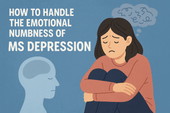
How to Handle the Emotional Numbness of MS Depression
Emotional numbness in MS depression doesn’t always look like sadness—it can feel like nothing at all. Learn why this disconnection happens, how it's tied to neuroinflammation and nervous system overload, and discover science-backed strategies to gently reconnect with your emotions.
-

How Inflammation Can Affect Mood in MS
Mood swings and emotional numbness in MS aren’t just psychological—they can be driven by immune system inflammation. This article explores how inflammatory cytokines affect the brain, why mood changes are often biological, and what you can do to calm your nervous system from the inside out.
-
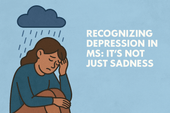
Recognizing Depression in MS: It's Not Just Sadness
Depression in multiple sclerosis (MS) is more than just sadness—it can be a neurological symptom, a side effect of inflammation, or a silent weight that masks itself as fatigue or emotional numbness. This article helps you recognize the hidden signs of MS-related depression, understand the science behind it, and explore real treatment options that support both mental and physical health.
-

Is Cryotherapy Safe for MS? Pros, Cons, and How It Compares to Cold Plunges
Cryotherapy promises quick recovery, inflammation reduction, and mood support—but is it safe for people with MS? This article breaks down the science, risks, and real-life benefits of cryotherapy for multiple sclerosis. You’ll also learn how it compares to cold plunges and which option may be better for calming flares and regulating your nervous system.
-
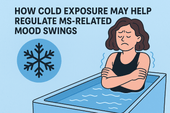
How Cold Exposure May Help Regulate MS-Related Mood Swings
Mood swings are a common but overlooked challenge in multiple sclerosis (MS). This article explores how cold exposure—like cold plunges and showers—may help regulate emotional ups and downs by calming the nervous system, reducing inflammation, and boosting mood-enhancing chemicals. Learn how to use this natural tool safely to support your mental and emotional resilience with MS.
-
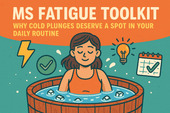
MS Fatigue Toolkit: Why Cold Plunges Deserve a Spot in Your Daily Routine
Fatigue is one of the most debilitating symptoms of multiple sclerosis (MS)—often invisible, misunderstood, and overwhelming. While no single tool can eliminate it, building a personalized fatigue management toolkit can make life more manageable. One surprising contender? Cold plunges. In this article, we explore why cold water immersion might be the refresh button your nervous system needs—and how to safely make it part of your MS fatigue routine.
-
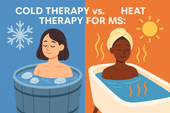
Cold Therapy vs. Heat Therapy for MS: Which One Helps More?
Managing multiple sclerosis (MS) often means navigating symptoms like fatigue, spasticity, pain, and nerve dysfunction. But when it comes to using temperature-based therapies, there’s a question many patients face: Should I be using cold or heat? In this in-depth guide, we explore the benefits, risks, and best use cases of cold therapy vs. heat therapy for MS.
-
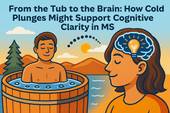
From the Tub to the Brain: How Cold Plunges Might Support Cognitive Clarity in MS
Cognitive fog is one of the most frustrating symptoms of multiple sclerosis (MS). But could cold plunges—those bracing dips into icy water—offer a surprising path to mental clarity? This article explores the emerging science behind cold exposure, brain function, and how a cold tub might help people with MS sharpen focus, lift brain fog, and reset their nervous system.
-
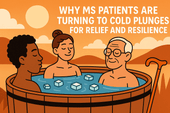
Why MS Patients Are Turning to Cold Plunges for Relief and Resilience
Cold plunges are no longer just for elite athletes and wellness influencers. A growing number of people with multiple sclerosis (MS) are turning to cold water immersion to ease symptoms, build nervous system resilience, and find calm in the chaos of chronic illness. This article explores why—and how—you might want to give it a try.
-
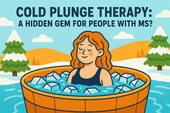
Cold Plunge Therapy: A Hidden Gem for People with MS?
Cold plunge therapy—once the domain of elite athletes and biohackers—is gaining attention among people with multiple sclerosis (MS). Could it help reduce inflammation, calm the nervous system, and ease MS symptoms like fatigue and spasticity? In this article, we dive deep into the science, benefits, safety, and practical application of cold plunges for MS recovery and symptom relief.
-
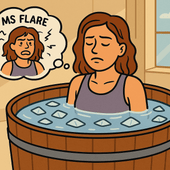
Finding Relief in the Midst of a Flare
MS flares can leave you feeling overwhelmed, exhausted, and mentally foggy. Cold water therapy is emerging as a promising tool to help reset the body and mind after a flare. This article explores how cold exposure supports recovery, calms the nervous system, and can be safely added to your daily routine.
-
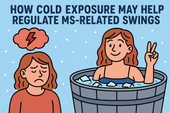
How Cold Exposure May Help Regulate MS-Related Mood Swings
Mood swings in multiple sclerosis (MS) can feel like emotional whiplash—one moment calm, the next overwhelmed, angry, or hopeless. While medications and therapy help, many people with MS are exploring natural strategies to support emotional balance. One surprising tool gaining attention? Cold exposure. In this article, we explore how cold plunges and other forms of cold therapy may regulate the nervous system, stabilize mood, and offer emotional relief for people with MS.
-
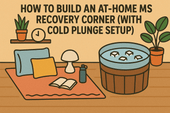
How to Build an At-Home MS Recovery Corner (with Cold Plunge Setup)
Create your personal MS recovery oasis at home—complete with a cold plunge setup. Learn how to design a space that supports healing, reduces inflammation, and helps you manage symptoms naturally.
-
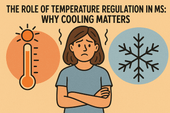
The Role of Temperature Regulation in MS: Why Cooling Matters

















































